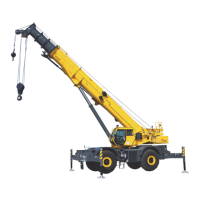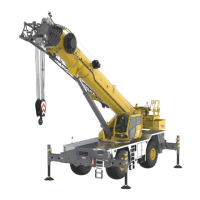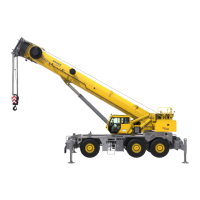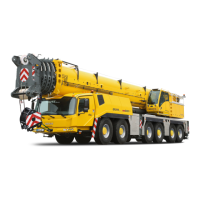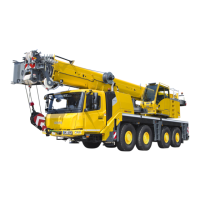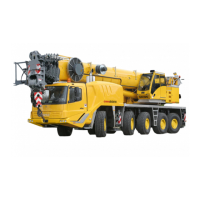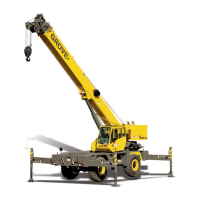SET-UP AND INSTALLATION GRT880 OPERATOR MANUAL
4-6 Published 3-25-2020, Control # 643-04
When anchoring socket to the boom, ensure flat face of
socket is toward boom sections as shown in Figure 4-8.
INSTALLING WEDGE AND SOCKET
1. Inspect wedge and socket. Remove rough edges and
burrs.
2. Seize wire rope end using soft or annealed wire or
strand. If end of rope is welded, welded end should be
cut off. This allows distortion of the rope strands, caused
by the bend around the wedge, to adjust themselves at
the end of the line.
3. Make sure live end side (Figure 4-9) of rope is directly in
line with ears of socket and direction of pull to which the
rope will be subjected. If rope is loaded into socket
incorrectly, under a load the rope will bend as it leaves
the socket. The edge of the socket will wear into the rope
causing damage and eventual failure.
4. Insert wire rope end in socket, form a loop in the rope,
and route rope back through socket allowing the “dead”
end to protrude from the socket. Ensure dead end of the
rope is long enough to apply end treatment after wedge
is seated.
5. Insert wedge in loop. Pull live end of rope until wedge
and rope are snug inside socket. It is recommended
wedge be seated inside socket to properly secure the
wire rope using the crane’s hoist to first apply a light load
to the live line.
6. After final pin connections are made, increase loads
gradually until wedge is properly seated.
7. Wire rope and wedge must be properly secured inside
socket before placing crane into lifting service. It is the
wedge that secures the wire rope inside the socket. The
dead-end treatment is used to keep wedge from
becoming dislodged from socket should the rope
suddenly become unloaded from the overhaul ball or
hook block striking the ground, etc.
Incorrect
Correct
Dead End
Live End
5337
FIGURE 4-9

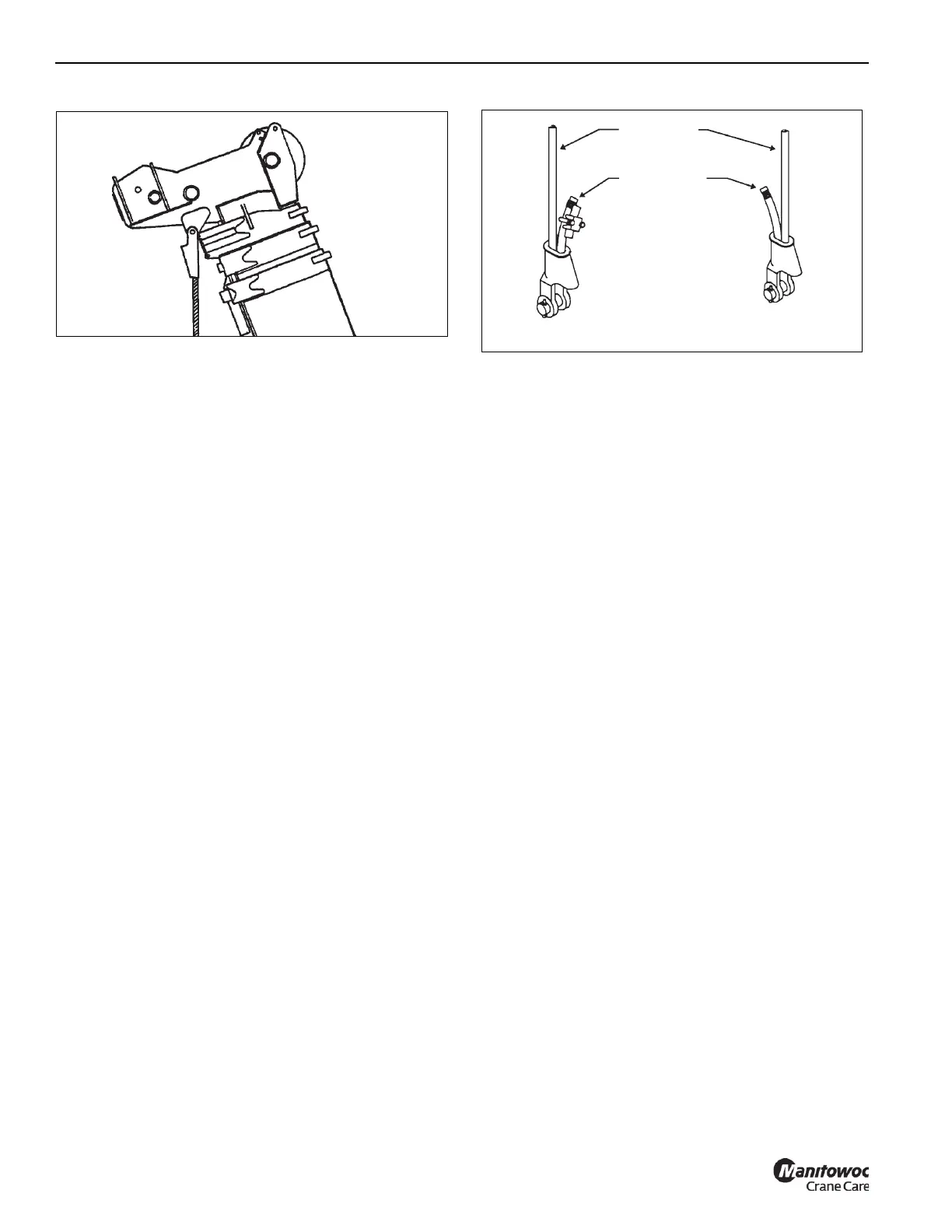